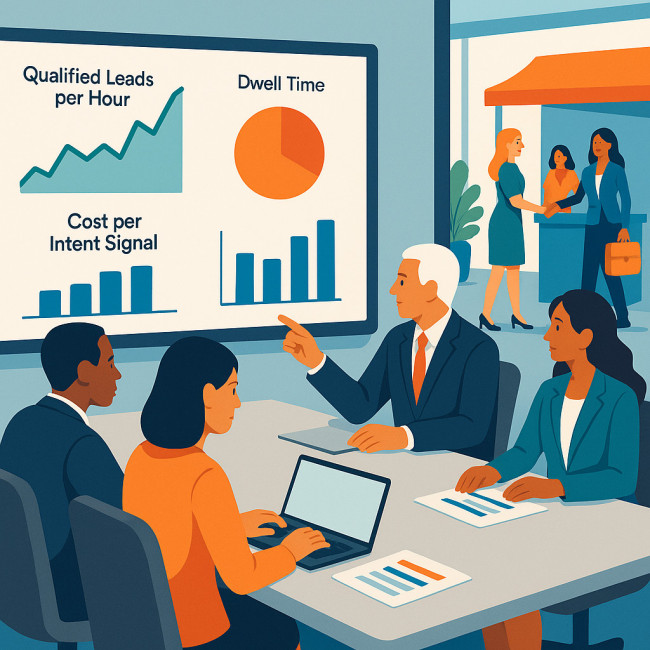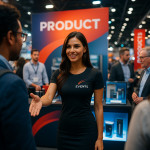Calculating ROI of event models: metrics that convince stakeholders fast
Hiring professional event models can turbo-charge lead capture, brand recall and on-site conversions—but only if you prove their financial impact quickly. This guide gives you battle-tested metrics, simple formulas and data-collection tips so you can walk into any budget meeting armed with numbers that silence doubt.
Why ROI matters in live marketing

Events swallow between 20 % and 30 % of annual B2B marketing budgets, according to the Event Marketing Institute. When every euro counts, decision-makers want hard proof that an investment—such as staffing models for trade-show stands, pop-up shops or gala soirées—delivers returns bigger than their fees, travel and wardrobe costs.
Key metrics that prove event model ROI
1. Qualified leads per hour (QLH)
Calculate the number of badge scans, QR code submissions or CRM entries generated by models, then divide by their staffed hours. Compare that figure with the sales team's QLH to spotlight efficiency.
2. Engagement dwell time
Measure how long visitors stay at your activation when greeted by models versus when the booth is unmanned. A 2023 EventTrack study found a 42 % lift in dwell time when professional greeters were present.
3. Conversion-to-demo ratio
Track how many engagements booked a product demo on the spot. A higher ratio signals that models are filtering casual footfall into serious prospects.
4. Social amplification rate
Count branded hashtags, story mentions and tagged photos featuring your models. Social lift extends event impact beyond venue walls, adding measurable media value.
5. Cost per intent signal (CPIS)
Divide total model expenditure by the number of high-intent actions (e.g., newsletter sign-ups, app downloads). Lower CPIS means better ROI.
Fast ROI formula
Use this two-step calculation for any event:
- Net value = (Average deal size × Closed-won opportunities sourced by models) − Sales fulfilment costs.
- ROI % = (Net value − Total model spend) ÷ Total model spend × 100.
Total model spend must include fees, agency commission, travel, accommodation, per diem and wardrobe rentals.
Benchmark cheat-sheet
| Metric | Acceptable | Good | Exceptional |
|---|---|---|---|
| QLH | 10 | 18 | 25+ |
| Engagement dwell time | 90 s | 140 s | 180 s+ |
| Conversion-to-demo ratio | 8 % | 15 % | 20 %+ |
| Social amplification rate | 1 post/100 visitors | 3/100 | 5+/100 |
| CPIS | €35 | €22 | €15 |
Case study: trade-show booth uplift

A SaaS brand compared two similar expos. Without models, it spent €18 000 on stand design and staff and generated 220 qualified leads, closing €110 000 in new business. With two certified event models at the second expo (additional €2 800), the team logged 360 qualified leads and €192 000 in revenue. Net value rose by €82 000, resulting in a 487 % ROI on the modelling spend.
Source : EventTrack 2022
Collecting the data in real time
- Scan-and-tag every visitor interaction with unique model IDs in your CRM.
- Heat-mapping cameras quantify dwell time without breaching privacy.
- UTM-coded QR offers track post-event conversions linked to each model.
- Social listening tools filter event hashtags to isolate model-related posts.
Common pitfalls and quick fixes
- Undefined objectives: Set numeric targets during the briefing, not on show day. This pairs well with the checklists in our event-model briefing guide.
- Overlooking total cost: Include overtime, agency mark-ups and wardrobe care when you evaluate packages. Our article on day-rate vs package budgeting walks through each hidden fee.
- Ignoring sustainability perks: Eco-conscious models can lift brand perception scores. Learn how in this sustainability playbook.
- Poor follow-up: Leads rot quickly. Automate email drips within 24 h.
FAQ
- How do I estimate average deal size before the event?
- Use historical CRM data for similar event-sourced deals over the past 12 months, then adjust for new pricing or product tiers.
- What if my event goal is brand awareness, not sales?
- Track cost per thousand impressions (CPM) using dwell-time footfall × venue rates or social reach. Compare that CPM to your programmatic ad benchmarks.
- Can I use part-time local talent instead of agency models?
- You can, but factor training hours into costs and expect lower QLH. Agency-trained professionals usually pay for themselves in higher conversion ratios.
- Is ROI still positive when the product sales cycle is six months?
- Yes. Use pipeline value rather than closed revenue. Multiply opportunities by average close rate to model future returns.
- How many models should I hire per square metre?
- One model per 10 m² of activation space keeps engagement personalised without overcrowding.
Quick quiz: ready to justify your next hire?
Conclusion & next steps
Event models are more than smiling faces—they're measurable revenue drivers. By tracking the right metrics and using the ROI formula above, you will defend your budget with confidence. Ready to source talent? Browse the full event model directory and pair this guide with our practical booking checklist to turn your next activation into a high-yield investment.











